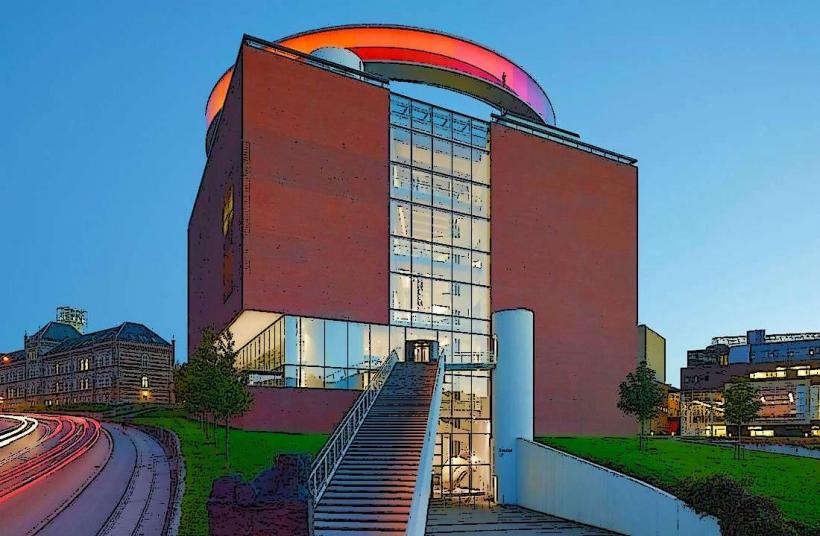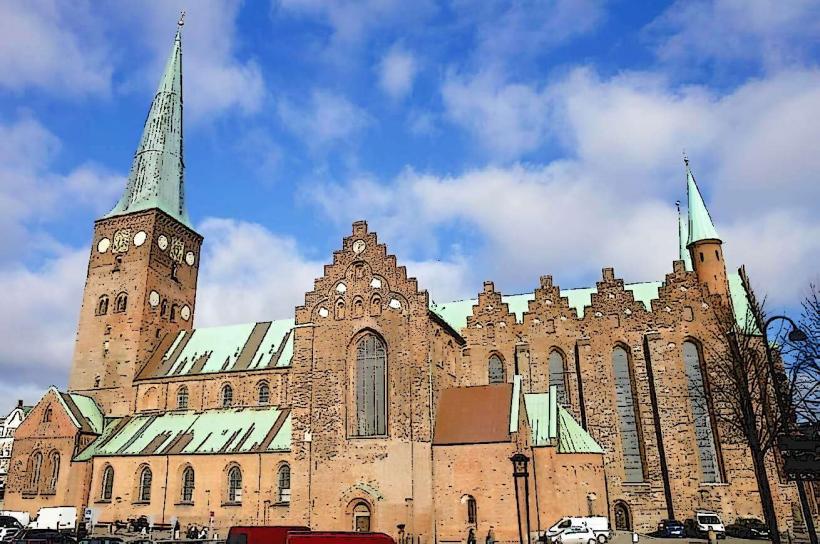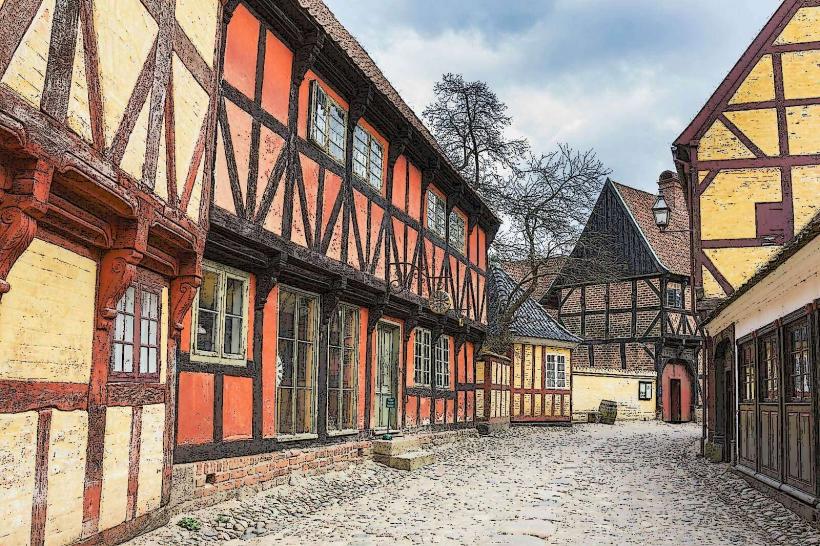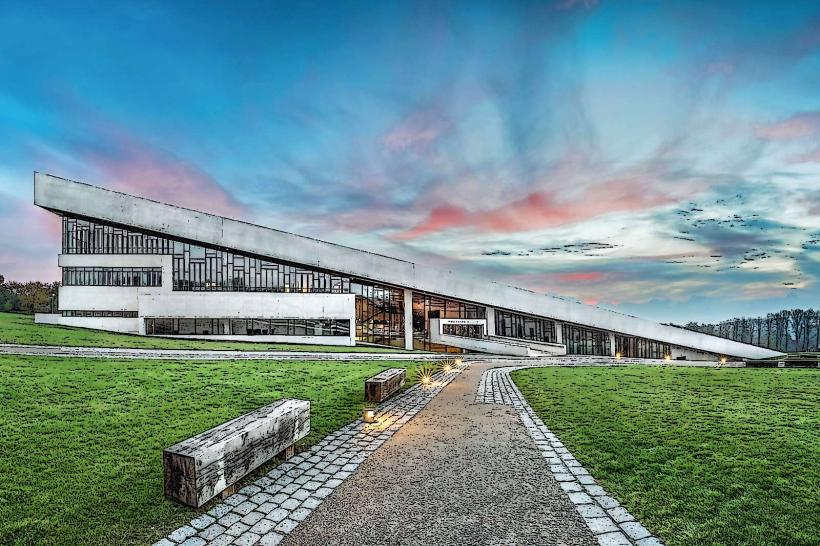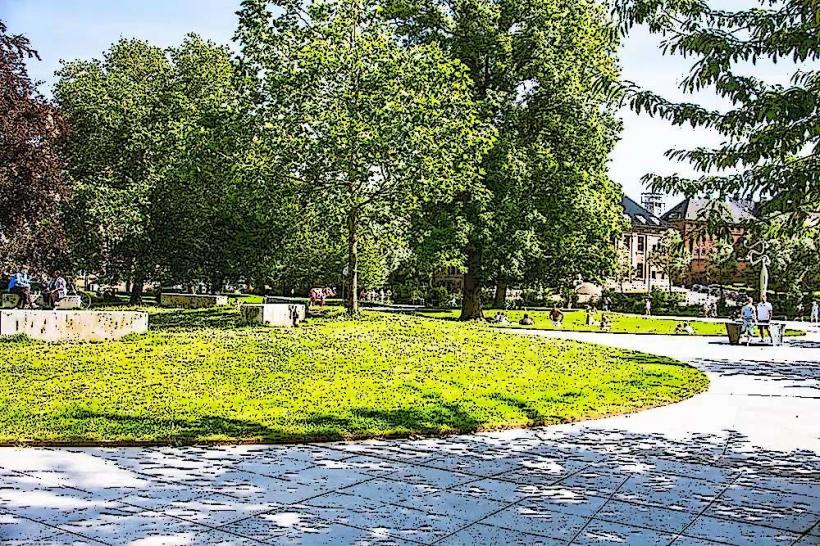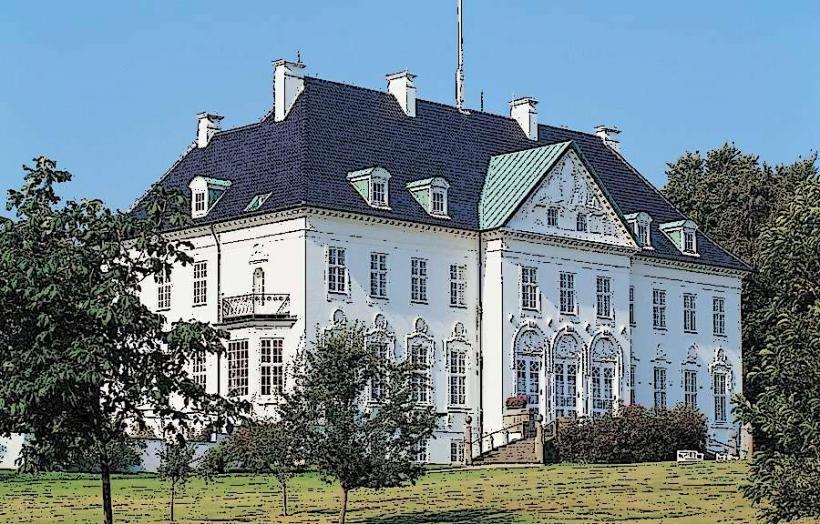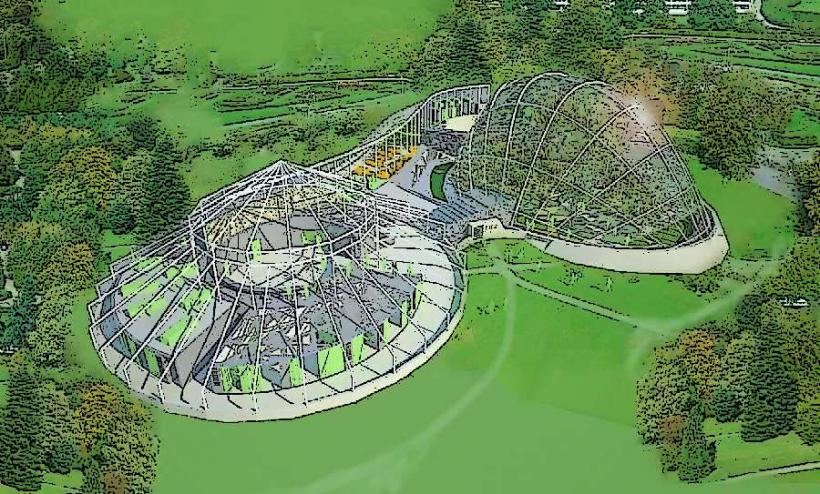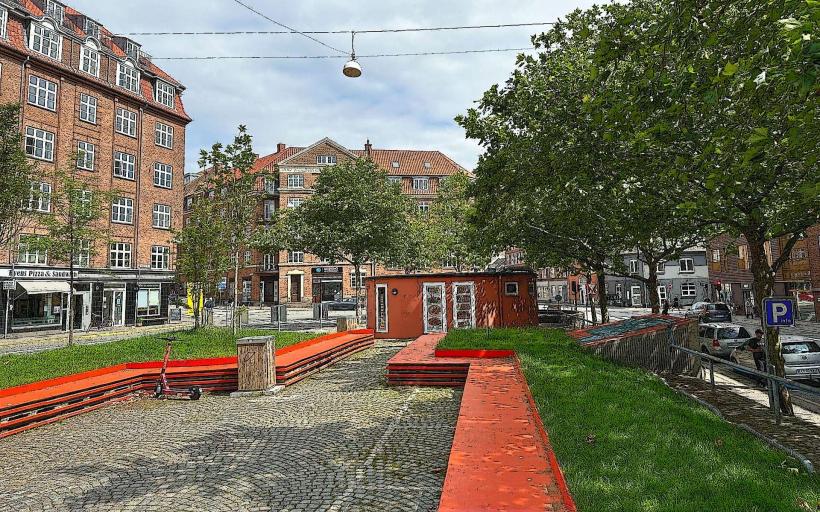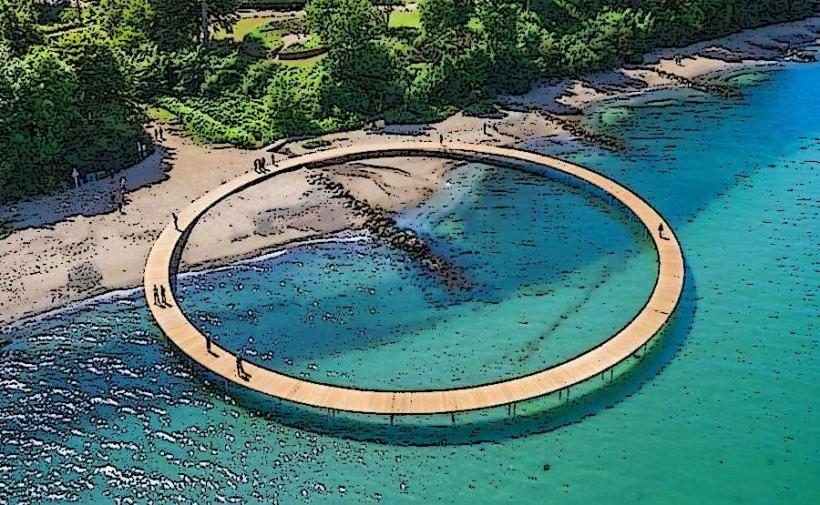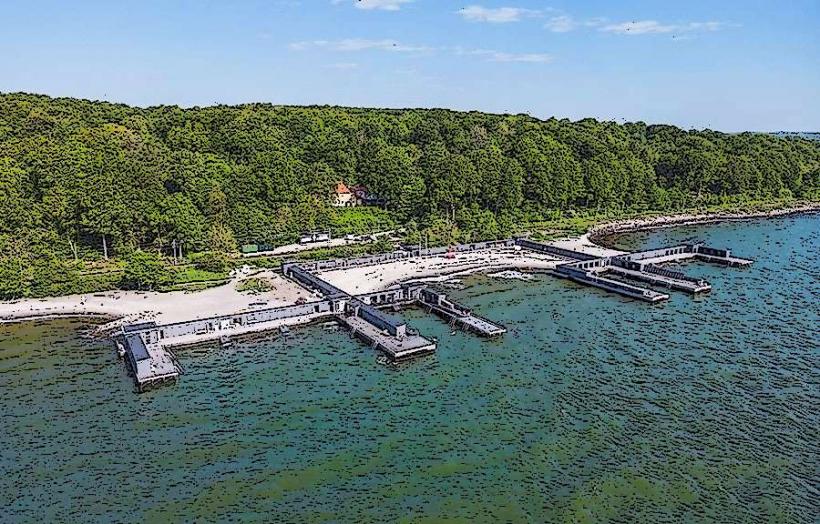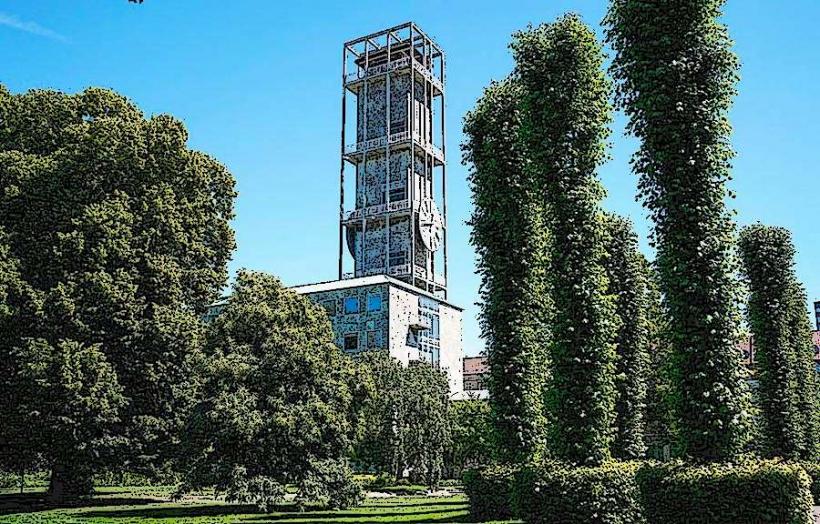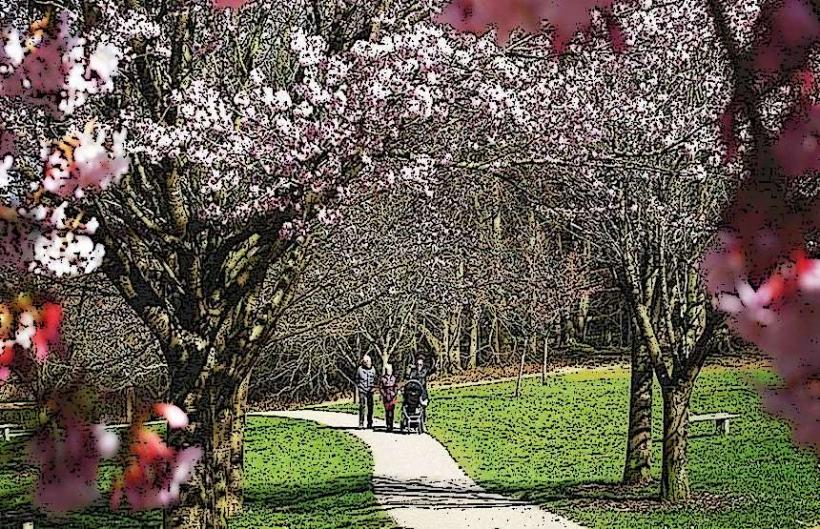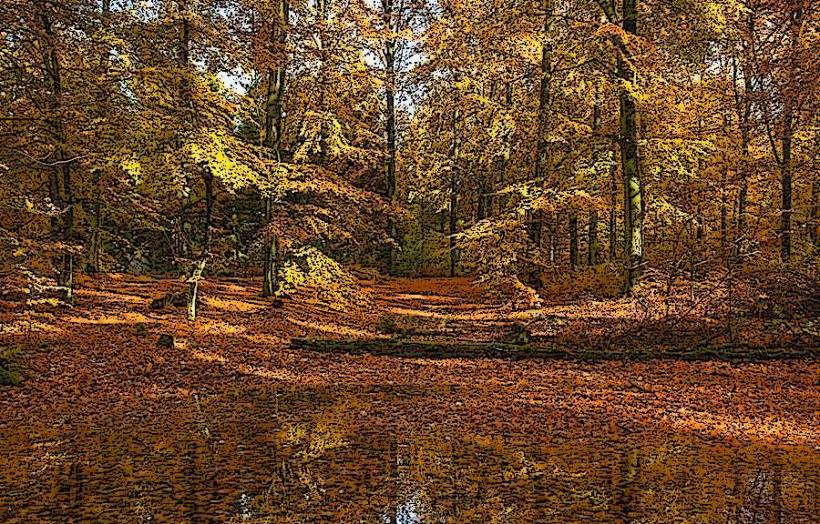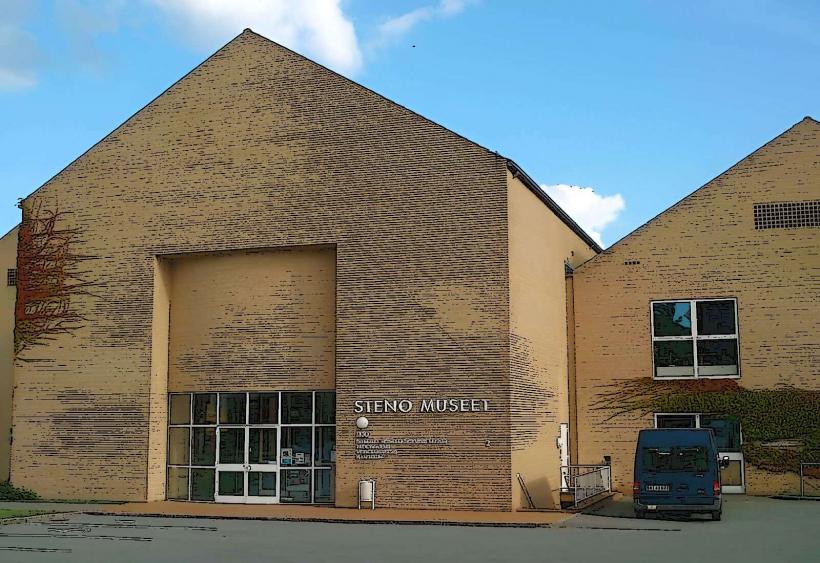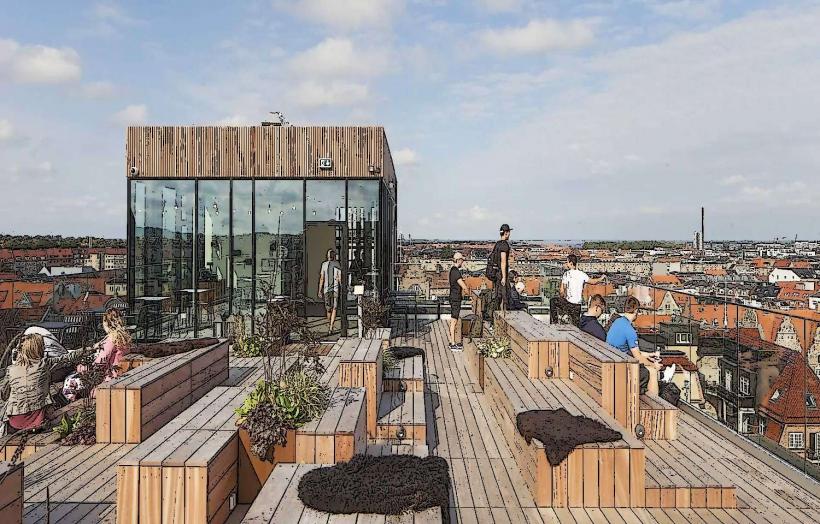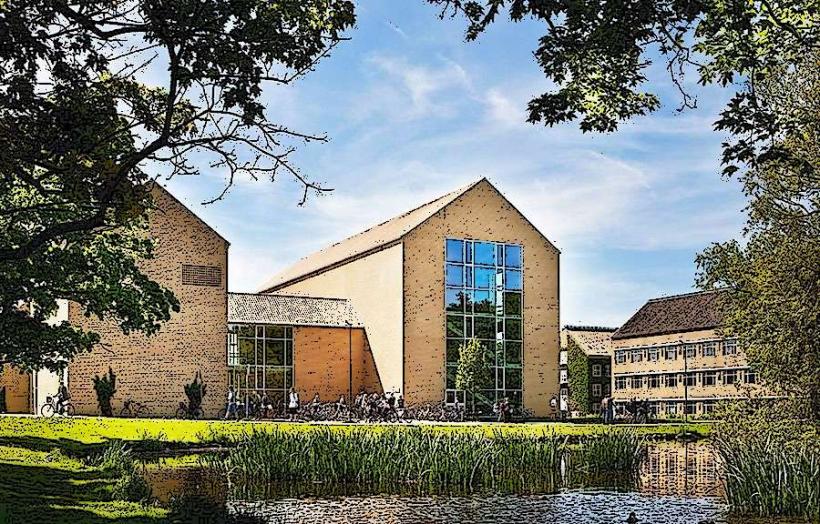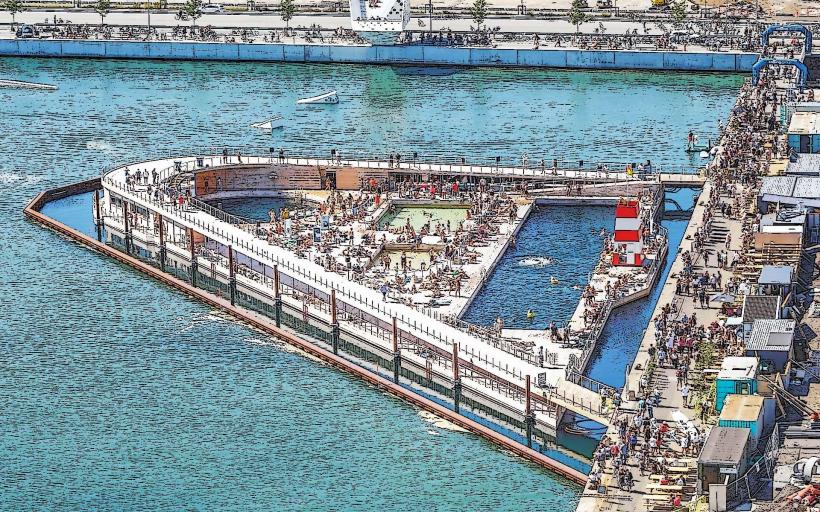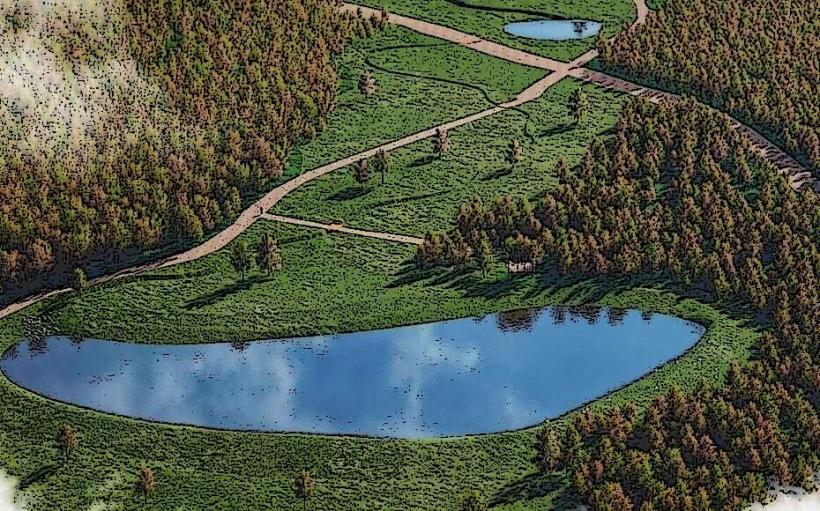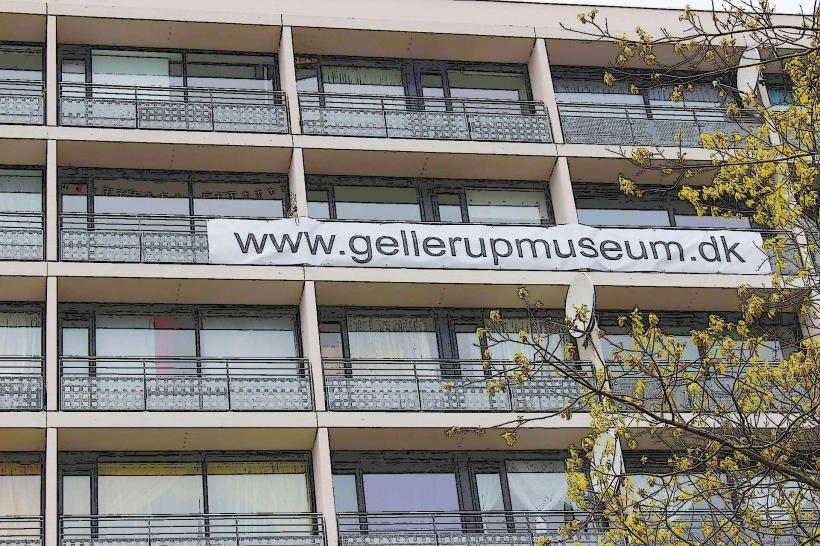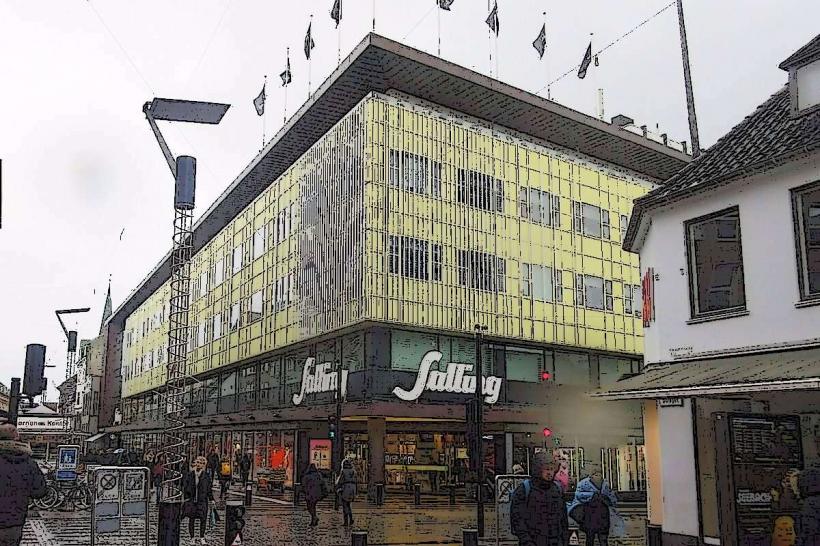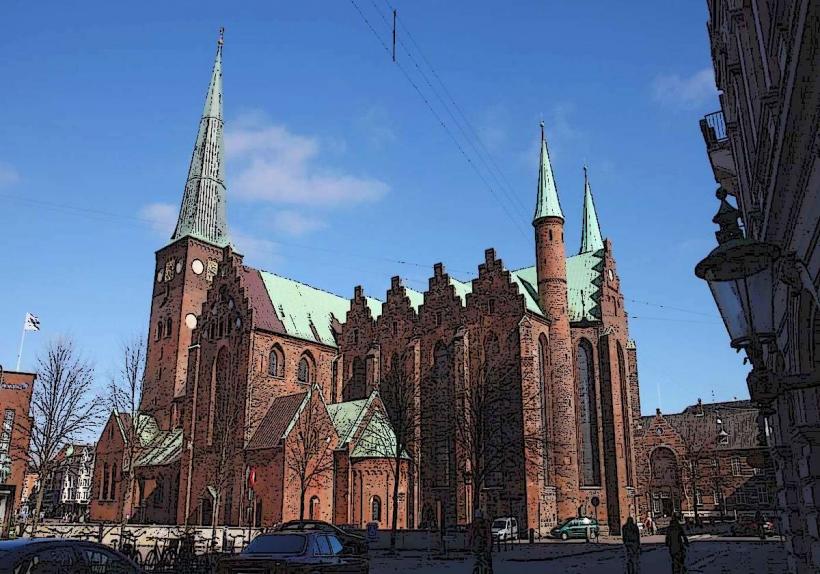Information
Landmark: Aarhus City HallCity: Aarhus
Country: Denmark
Continent: Europe
Aarhus City Hall (Aarhus Rådhus) is an iconic and historically significant building located in the heart of Aarhus, Denmark. It is one of the most prominent examples of modernist architecture in the city and serves as the administrative center for the municipality of Aarhus. The building is not only a key architectural landmark but also a symbol of the city's development and cultural identity. Here’s a detailed overview of Aarhus City Hall:
History and Design
- Architectural Design: Aarhus City Hall was designed by the renowned Danish architect Arne Jacobsen, in collaboration with his colleague Erik Møller. It was completed in 1941, though Jacobsen’s work on the project began in the late 1930s. The building is a significant example of Danish functionalism and modernist architecture, reflecting Jacobsen's minimalist approach and his focus on clean lines and simple forms.
- Construction: The construction of the City Hall was part of an ambitious plan to modernize Aarhus during the early 20th century. The building was intended to be both a functional administrative hub and an architectural showcase for the city’s growing importance in Denmark. It was inaugurated in 1941, and its design reflects both modernism’s principles of simplicity and functionality, as well as an ambition for grandeur.
Architectural Features
- Modernist Style: The building features elements of Danish functionalism, with an emphasis on clean geometric lines, large windows for natural light, and open interior spaces. It was designed to be both functional and aesthetically striking, with an emphasis on minimal ornamentation and efficiency.
- The Tower: One of the most distinctive features of Aarhus City Hall is its tall clock tower, which stands at 60 meters (197 feet). The tower is a significant landmark in the city and provides a panoramic view of Aarhus from the top. The clock is visible from several parts of the city, serving as a navigational point for locals and visitors alike.
- The Facade: The building’s exterior is characterized by red brick, which was chosen to blend harmoniously with the surrounding urban landscape. The smooth, clean facade, combined with its minimalist details, gives the building a timeless and elegant quality. Large windows are used throughout to maximize light and airiness inside.
- Interior Design: The interior of the City Hall is equally impressive, featuring open spaces, high ceilings, and functional layouts. It includes public and administrative areas, with a notable use of natural materials like wood and stone to create a warm, welcoming atmosphere. Jacobsen’s trademark attention to detail is evident in the furnishings, fixtures, and finishes.
Key Features and Spaces
- Main Hall: The City Hall's main hall is a large, open space used for ceremonies, receptions, and other public events. Its clean lines and minimalist aesthetic create an atmosphere of calm and order, reflecting the building's purpose as a center of governance.
- Council Chamber: The Council Chamber, where municipal meetings are held, is another important space in the City Hall. It is designed with functionality in mind, providing a space that is both professional and conducive to decision-making.
- Clock Tower Viewing Platform: The clock tower has a viewing platform that offers stunning views of Aarhus, including the surrounding city and coastline. Visitors can access the top of the tower, which is one of the most popular attractions for tourists and locals alike.
Cultural and Political Significance
- City’s Administrative Center: Aarhus City Hall houses the municipal government and local administrative offices. It is a place where key decisions about the city’s development and governance are made.
- Symbol of Aarhus: The City Hall is a cultural and historical symbol of Aarhus and represents the city’s progression from a small town to a modern urban center. It is often used for various ceremonial functions, official meetings, and events that highlight the city’s development.
- Art and Design: Arne Jacobsen’s influence extends beyond architecture; he was also known for his design work, and some of his iconic pieces of furniture are found within the City Hall. The building’s integration of art, design, and architecture is an example of Jacobsen’s holistic approach to creating functional yet beautiful spaces.
Visitor Experience
- Public Access: Aarhus City Hall is generally open to the public during regular office hours. Visitors can explore the building’s architectural and cultural features, especially the main hall and council chamber. The clock tower can be visited for panoramic views of the city.
- Tours and Events: The City Hall is sometimes open for guided tours, where visitors can learn more about its design and history. It is also a popular venue for civic ceremonies, weddings, and public events.
- Surrounding Area: The City Hall is situated in a central part of Aarhus, close to other attractions like Rådhusparken (City Hall Park), Aarhus Central Station, and Strøget, the city’s main shopping street. Its central location makes it easily accessible to both residents and tourists.
Legacy and Influence
Aarhus City Hall remains a defining example of 20th-century Danish architecture. It not only represents the modernist movement but also stands as a testament to Arne Jacobsen’s vision of how architecture could serve both functional and aesthetic purposes. The building’s design has influenced subsequent generations of architects and remains an essential part of the city's architectural heritage.
In summary, Aarhus City Hall is a vital part of Aarhus’ cultural, political, and architectural identity. Designed by Arne Jacobsen, it stands as a beautiful example of modernist architecture, offering both functional space for the municipality and a stunning landmark for the city.

